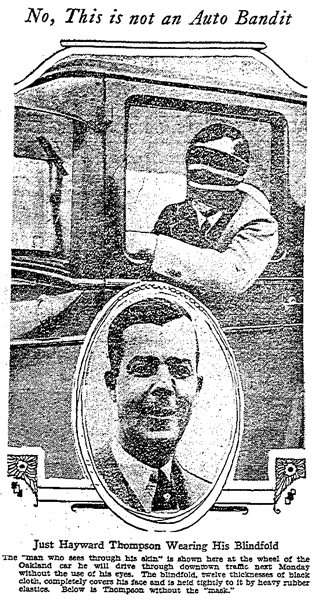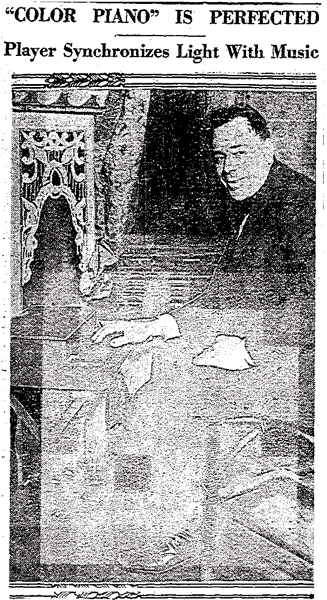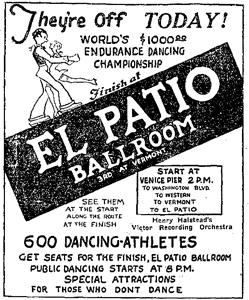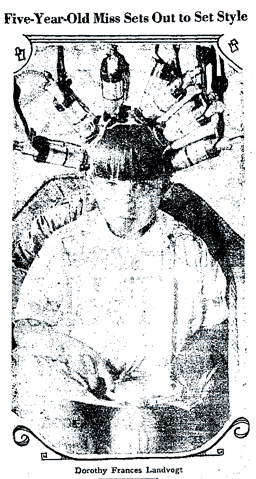January 27, 1927
Los Angeles
 Hayward Thompson toured Los Angeles today, and pronounced on KFWB this evening (through the courtesy of the Times and Gartzman, Inc, your friendly local Oakland distributor) that driving through Los Angeles was going to be a snap. Without the use of his eyes, of course. Seems he doesn’t need them—Thompson was blinded when a German shell took out part of his brain at Bois de Belleau, and then miraculously regained his sight—and he’s been able to read, golf, shoot rifle matches, since then, while blindfolded.
Hayward Thompson toured Los Angeles today, and pronounced on KFWB this evening (through the courtesy of the Times and Gartzman, Inc, your friendly local Oakland distributor) that driving through Los Angeles was going to be a snap. Without the use of his eyes, of course. Seems he doesn’t need them—Thompson was blinded when a German shell took out part of his brain at Bois de Belleau, and then miraculously regained his sight—and he’s been able to read, golf, shoot rifle matches, since then, while blindfolded.
Thompson, 47 years of age though who reportedly looks 30, has made 332 paroptic public exhibhibitions, in every great city of America and Europe, and will make this, his Los Angeles trip, at one hundred miles, his last.
Thompson states that he has more competition here than anywhere else in the world. “Driving around Los Angeles I find a good many blind drivers,” he said. “I even encountered one who was blind drunk.”
On January 31st, his 333rd exhibition (spooky) Thompson was blindfolded by Deputy Chief of Police Spellman, and did indeed motor one hundred miles through the congested centers of Los Angeles, Hollywood and Pasadena, obeying all signals and laws, without a hitch.
And now he’s ceased. He’s had to stop because in having only two layers of skin (as opposed to the three you and I have), in conjunction with the fasting he must undergo to sharpen his dermoptic wits, has proven bad for his health.
In retirement, Thompson plans on devoting the rest of his life to hypnotizing people over the radio, via Mesmer’s system of suggestion.


 Leo Geasland, an electrician at the
Leo Geasland, an electrician at the  In a 1933 article about Geasland’s apparatus, it’s noted that the blind and deaf are admitted for free every Monday evening to the Rainbow Gardens (the El Patio became the
In a 1933 article about Geasland’s apparatus, it’s noted that the blind and deaf are admitted for free every Monday evening to the Rainbow Gardens (the El Patio became the 

